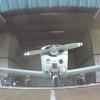Will an engine monitor alert to a sticky valve?
-
Members Online
- EricJ
- tim417
- Kelpro999
- kortopates
- gabez
- richardbrochu27
- Adam_M
- M20F
- LOCOLJ
- TCC
- 47U
- Parker_Woodruff
- jeff.reynoljm
- Mikey30V
- dzeleski
- Guilly
- Grant_Waite
- NickG
- srhalter
- UteM20F
- FADEC
- mooneyfun
- IvanP
- Skyland
- FlyingScot
- AndrewCobb23
- DonMuncy
- Greg Ellis
- TheAv8r
- PeteMc
- WyattPilot
- exM20K
- Scott Dennstaedt, PhD
- DJE22
- PeterRus
- ta2too
- Lionudakis
- ericrynehess


Recommended Posts
Join the conversation
You can post now and register later. If you have an account, sign in now to post with your account.